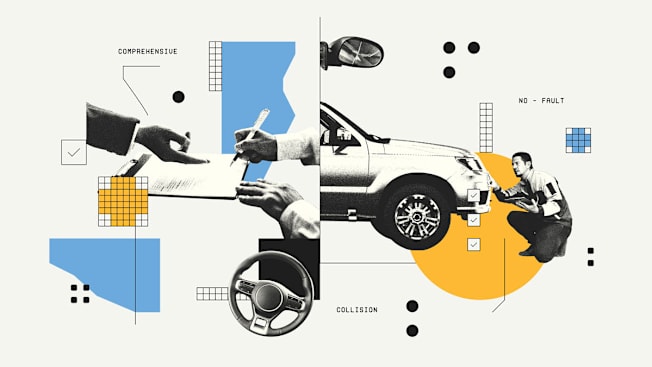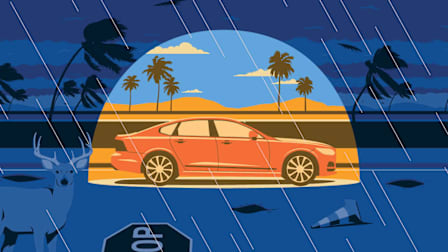How Much Car Insurance Do You Need?
Your coverage limits will be different based on what you drive and whether you own, finance, or lease your car

The cost of driving continues to increase, leaving many consumers seeking relief from soaring car insurance prices, which have gone up by over 30 percent since 2023, according to the Bureau of Labor Statistics. One way to save money is to reduce your coverage limits, a move that lowers your premium but also decreases how much your insurance company will pay out after a crash, potentially making you liable for any additional bills.
Understanding Car Insurance Basics
To choose the right amount of coverage to carry, you need to first understand the three main kinds:
Liability insurance pays for damage you cause in a crash. Bodily injury liability pays for medical expenses, while property damage liability pays to fix or replace the car or property you hit. It doesn’t pay for damage to your own car. Some amount of liability insurance is mandatory in most states.
Collision insurance pays for damage to your car from a crash that’s not the fault of another driver. It costs extra.
Comprehensive insurance pays for damage to your car that isn’t your fault and that isn’t related to a crash, including if your car is stolen or vandalized, catches fire, or is damaged by weather or a crash with an animal. It also costs extra.
These separate coverages exist because there are different risks for different aspects of driving and owning a vehicle, according to Bell. “Insurance actuaries calculate those risks and come up with separate premium costs for each category,” he says. That way, drivers can select the type of coverage that works best for them, while insurance companies can collect enough premiums to pay for claims in each area.
What Is 100/300/100 Insurance Coverage?
Most experts, including CR and the Insurance Information Institute (III), recommend carrying liability coverage that offers:
• $100,000 worth of bodily injury liability coverage per person
• $300,000 worth of bodily injury liability coverage per crash
• $100,000 in property damage liability per crash
Insurance agents may call this “100/300/100” coverage, and it’s usually a good balance between coverage limits and premium costs. If you have significant financial assets, CR recommends taking out additional coverage, such as 250/500/250. This would prevent an insurance company from coming after your assets, including your savings, but it will cost you more in premiums.
Ultimately, the amount of additional coverage you carry depends on how much you have to lose and your tolerance for risk, Bell says. “Serious accidents can result in very expensive claims, but they are relatively rare,” he says. According to the III, the average bodily injury liability claim was $26,501 in 2022.
Do You Need Collision or Comprehensive Coverage?
If you want to save money on premiums, you can consider dropping collision and comprehensive coverage when your annual premiums equal or exceed 10 percent of your car’s book value, and/or the vehicle is more than 10 years old.
For example, if you’re paying $500 a year for collision and comprehensive on a car worth $4,000, you’re essentially spending $500 on the chance to recoup $4,000. Instead, you could put that money aside in an emergency fund that’s later used to buy a newer (and safer!) car.
Beware: If you hit a deer or your car is stolen, you’ll be on the hook for any repairs or the full replacement cost.
If you have enough money saved up to buy a new car, however, dropping collision or comprehensive coverage could make sense. “You could end up paying more over time in premiums than you would recoup for the repair or replacement of your damaged, stolen, or totaled vehicle,” Bell says.
According to the III, the average person in the U.S. has between three and four crashes over the course of their lifetime and files a collision claim once every 18 years.
Finance or Lease? You Might Need More Coverage
If you have a car payment, it means that someone else—usually a bank or leasing company—owns your car, and they don’t want to end up on the hook for any damage that happens to it. That’s why most finance or leasing companies require drivers to carry comprehensive and collision insurance—and may have their own set minimum coverage that exceeds state requirements.
If You Have a Lot to Lose, Consider Umbrella Insurance
If you already have a homeowners policy and an auto policy, an umbrella coverage policy adds an extra layer of coverage to address liability claims that exceed your existing coverage. This makes sense especially for those with significant wealth or financial assets.
“If you own a boat or a rental property, or you were facing a defamation claim, or extraordinary costs from an auto accident, the umbrella policy would kick in and provide additional protection,” Bell says. “The cost is relatively modest, so this may be worth having if you can afford it.”
More on Car Insurance
• CR’s Car Insurance Ratings and Buying Guide
• Best Car Insurance Companies
• Cheapest Car Insurance Companies
• How to Lower Your Car Insurance Rates
• Best Car Insurance Companies for Seniors
• Everything You Need to Know About Teen Car Insurance
• Proven Ways to Save on Car Insurance Even If You’re a Safe Driver
• How to Keep Your Car From Getting Stolen
• How to Prevent Catalytic Converter Theft




















